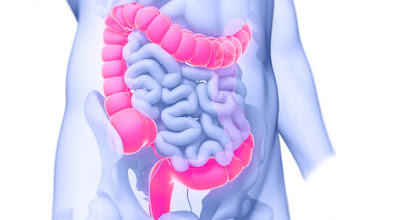Many have them but don't know about them: small protuberances in the intestines called diverticula. If there are many, it is called diverticulosis.
Diverticulosis is a mostly harmless change in the intestinal wall in which small protuberances form. These bulges are called diverticula. If there are many diverticula next to each other, doctors speak of diverticulosis. Diverticula often develop in the large intestine, and in rare cases also in the small intestine.
Diverticulosis is considered a civilization phenomenon and mainly affects older people. Anyone who has one or more diverticula does not necessarily have to know anything about it, because the protuberances often do not cause any symptoms. However, the diverticula can also become inflamed. Then diverticulitis develops.
Diverticulosis Causes And Risk Factors
Which factors are responsible for the fact that an intestinal wall forms diverticula is controversial among experts. For a long time, diverticulosis was considered a disease of civilization related to the eating habits in western industrialized nations: too little fiber and too much red meat. Since low-fiber foods lead to a hard and firm stool and thus often to constipation, it was assumed that the pressure in the intestine could cause protuberances over time. This could also explain why diverticula are often found in older people in particular, whose connective tissue is weakening. After all, about two-thirds of those over 80 have such protuberances in the intestinal mucosa.
Recent studies come to two different conclusions: On the one hand, scientists have found that vegetarians, even if they do not pay attention to a high-fiber diet, get fewer diverticula. Another study was able to show that fiber does not protect against diverticulosis. Accordingly, neither constipation nor physical laziness are risk factors for the formation of diverticula.
 |
| Diverticulosis |
Diverticulosis Symptoms
Anyone who has diverticulosis does not have to be sick. Many of the protuberances in the large or small intestine remain harmless and without symptoms (asymptomatic diverticulosis). Most diverticula form on the descending part of the colon, at the point in the left abdomen where the colon makes its S-curve.
Since many people do not know that they have diverticulosis, its discovery is sometimes what is known as an incidental finding. For example, a doctor can see the diverticula with a colonoscopy or with an X-ray with contrast medium.
It is also possible that those affected only feel symptoms similar to those of irritable bowel syndrome after years. These include pain and indigestion:
- Slight pressure and pain in left lower abdomen
- Digestive irregularities such as constipation and diarrhea
Two forms of diverticula can be distinguished from the point of view of physicians:
- So-called false diverticula or pseudodiverticula are the most common. In western nations, they are responsible for 90% of diverticulosis cases. In the case of false diverticula, the intestinal mucosa bulges outwards through a tiny gap in the muscular intestinal wall. False diverticula form primarily in the descending large intestine (colon descendens) and the S-shaped transition (colon sigmoideum, sigma) to the rectum.
- True diverticula are much less common. The muscular wall of the intestine bulges outwards. Real diverticula usually form in the ascending area of the large intestine (colon ascendens). True diverticula are mostly congenital and mainly found in Asia.
Diverticulosis Treatment
As long as diverticulosis is not causing symptoms, it does not need to be treated. If the diverticula begin to become inflamed and develop diverticulitis, those affected can counteract this by fasting and drinking a lot.
When to the doctor?
If there are symptoms such as fever, blood in the stool and other complications, it is advisable to consult a doctor.
Prevention
Even if the studies contradict each other - whether high-fiber diet, little red meat and a lot of exercise really help against diverticulosis - it seems that a lot of fiber at least prevents the diverticula from becoming inflamed and diverticulosis becoming diverticulitis. Therefore, experts continue to recommend changing your diet:
- Eat lots of fruit, vegetables and whole grains because they are high in fiber.
- Refrain from coarsely ground products, since food components that are too hard and sharp can injure the diverticula.
- If you have trouble eating lots of fruit and vegetables, you can mix in wheat bran or oat bran and ground flaxseed instead, because they're high in fiber.
- Drink two to two and a half liters of fluids per day.
- Endurance sports such as hiking, running and swimming get the intestines moving.
